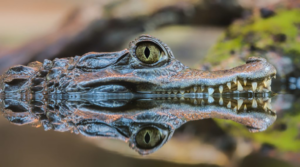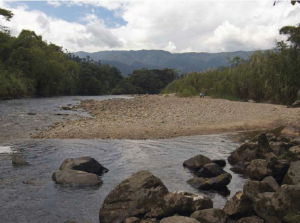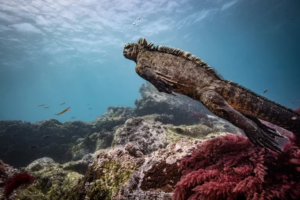Introduction
Exploring the fascinating world of Galapagos wildlife, one cannot overlook the charismatic Galapagos penguin. As the third smallest seabird globally, this remarkable creature stands at 50 centimetres tall, making its home exclusively in the Galapagos Islands. In this article, we delve into the unique features, behaviours, and conservation efforts surrounding these captivating penguins.

Endemic Wonders of Galapagos
Adapting to Unique Currents
The Galapagos penguin, scientifically known as Spheniscus mendiculus, holds the title of the only penguin species found north of the equator. Its presence is attributed to the Humboldt and Cromwell currents, which bring cold, nutrient-rich waters to the Galapagos archipelago. Originating from the penguins of Chile, these birds made their way to Galapagos around 4 million years ago, establishing a distinct and rare population.
Defying Latitude Norms
Unlike their counterparts in the southern hemisphere, Galapagos penguins defy traditional latitudinal expectations. Thriving in the Ecuadorian archipelago, they navigate both northern and southern waters, showcasing a remarkable ability to tolerate warm climates uncommon for most penguin species.
Habitat and Population
Niche in the Enchanted Islands
Approximately 95% of the Galapagos penguin population resides along the rocky coasts of Isabela and Fernandina islands in the western part of the archipelago. These areas are influenced by the cold Humboldt Current, creating an ideal environment for these unique birds.
Sociable Yet Territorial
Galapagos penguins exhibit social behaviours, often forming large groups during the breeding season. However, they become fiercely territorial when safeguarding their nesting sites. The beak, wings, and vocalisations become essential elements in warding off intruders, emphasising their dedication to protecting their habitat.
Physical Features and Adaptations
Bicolour Beauty
Identifying a Galapagos penguin is a visual treat. Their striking bicolour fur, featuring black fins, back, legs, and head, contrasts with a white chest. A distinctive “C”-shaped line runs along the throat and the side of each eye, complemented by dark bands and irregularly distributed spots.
Unique Adaptations
To thrive in their habitat, Galapagos penguins boast unique adaptations. Their skin allows for efficient heat loss, and they moult twice a year to replace sun-damaged feathers. These penguins employ panting and seek shade to balance their body temperature during the hottest hours of the day.
Predators and Survival
Threats from Land and Sea
Galapagos penguins face threats from various predators, including snakes, owls, hawks, rats, and cats on land. In the sea, sharks and sea lions pose significant challenges. Their rounded body shape, waterproof plumage, and rigid flippers contribute to their prowess in hunting, allowing them to surprise prey from below.
Lifespan and Reproduction
The life expectancy of Galapagos penguins, up to 20 years, hinges on suitable habitat conditions and an ample supply of small fish and squid for sustenance. Notably, they form monogamous relationships, with males presenting stones as a symbolic gesture to their mates.
Conservation Efforts
Research and Preservation
Since 2011, the Galapagos Conservation Trust, in collaboration with the Charles Darwin Foundation and the Galapagos National Park, has undertaken vital research projects. These projects focus on demography, survival rates, reproduction, and environmental impact assessment, including the influence of introduced species like rats and cats.
A Glimpse into the Future
As scientists continue their efforts, the Galapagos penguin remains a subject of extensive study. Research outcomes provide essential insights into the conservation of this unique species, aiding in the formulation of effective management strategies and ensuring the survival of these enchanting birds in the years to come.




